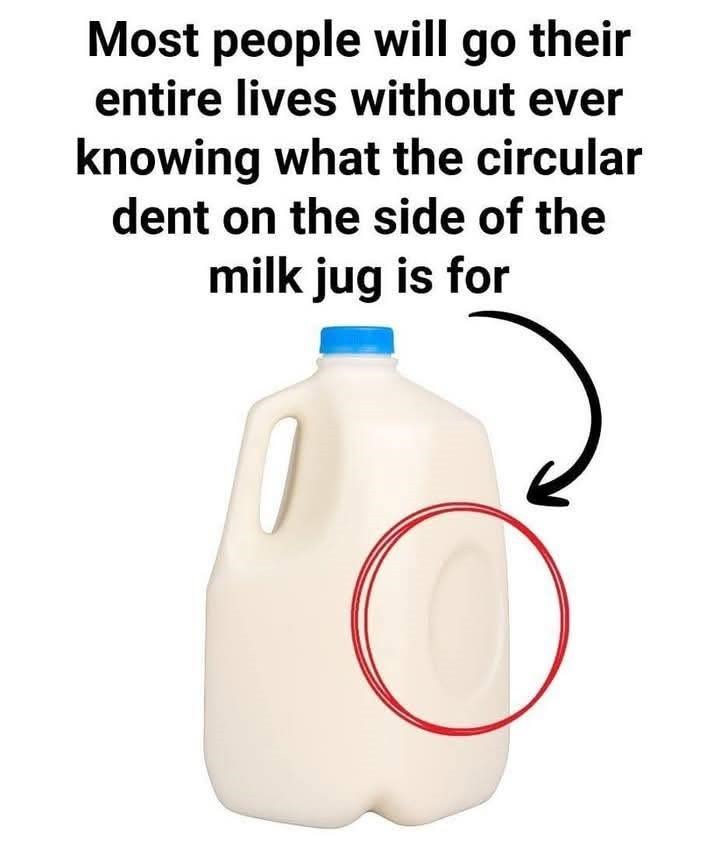All right, this one is a little bonkers.
Sometimes, if milk is beginning to spoil and the bacteria start to multiply, they can release gases that create pressure inside the jug. With that pressure in place, the dent will start to pop out.
So if you ever see a jug where the dent is puffed out or looks otherwise abnormal, don’t ignore it. That might be your milk crying out, “Hey! I’ve turned!” We know that not every dent bulge indicates bad milk, by the way, but it is a clever early warning system. And it’s certainly not an expectation for the average person.
milk jug
But Why This Specific Shape?
Why a circle, though? Why not a triangle or a square?
It turns out circles are inherently stronger shapes for distributing pressure. There are no sharp corners to focus stress. Instead, pressure transfers evenly around a circular edge, which is why it is the ideal shape for a flex-point in a jug that frequently encounters temperature shifts, handling and stacking.
From a manufacturing perspective, circles are also simple: They’re easy to mold and repeat hundreds of millions of times on identical containers. A tour de force of symmetry, simplicity, and science.
